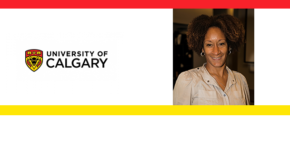 Those who teach and learn science could use more diversity.
Those who teach and learn science could use more diversity.
Jennifer Adams, associate professor in the department of chemistry at the University of Calgary, explains why.
Dr. Jennifer D. Adams was born and raised in Brooklyn, NY. After college she worked in physical therapy for two years before entering the field of education. Dr. Adams taught high school Biology in the New York City Public Schools and concurrently worked as a field instructor for New York City Outward Bound. Dr. Adams then moved on to the American Museum of Natural History where she worked as a manager of teacher education. Dr. Adams completed a MS in nutrition at Brooklyn College, CUNY and an MA in education at New York University followed by a PhD in urban education with a Science, Math and Technology specialization at The Graduate Center, CUNY. Prior to joining the University of Calgary in 2017, Dr. Adams was an associate professor of science education at Brooklyn College, CUNY. Dr. Adams enjoys running and dance.
Minority Students and Science Achievement
Black and Latinx students continue to experience disparities in science achievement. Amongst other things, this has been attributed to the pervasive deficit narratives about them in relation to science education and schooling. These structure the learning experiences and corresponding identities available to students of color in science learning.
In our research on teacher identity and teacher learning, we realized that Black and Latinx teachers are also subjected to the same narratives as their students. This was evident in the stories they told about their own experiences of science teaching and learning and the positioning of their racialized students in relation to science learning.
To counter these narratives the teachers redefined the meanings and related practices of science learning in ways that resonated with their social identities as racialized subjects and their goals and imaginations for their students of colour. Importantly, they created spaces and opportunities for their students to transform the existing racial narratives for themselves. This included using their own free time to do science-related field trips and developing out-of-school learning spaces for students to learn and use the basic skills of scientific inquiry.
They also changed classroom practices to support more informal science learning approaches, such as augmenting the use of the physical space and furniture in the classroom in novel ways and emphasizing activities that fostered more dialogue and interactions amongst students. The teachers became Critical Agentic Bricoleurs. In other words, with a critical awareness of race they used the resources at hand to create new learning experiences that allowed their students to experience different engagements with science and opportunities to reimagine science identities and futures that were alternative to the ones commonly available to them in schools.

Comments
One response to “Jennifer Adams, University of Calgary – Minority Students and Science Achievement”
Hy. : Thanx, Prof.?
Smitty , B-more.
GARC
NEHA